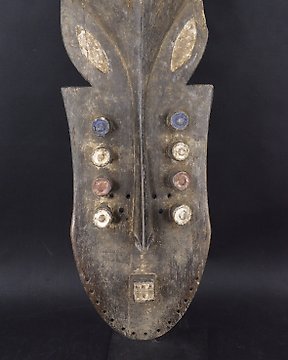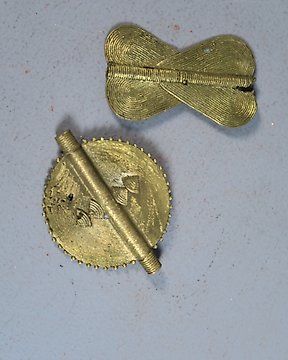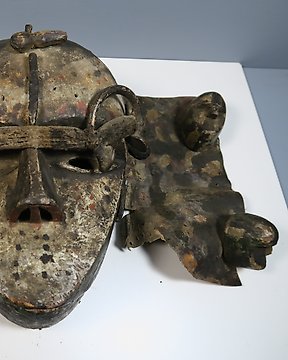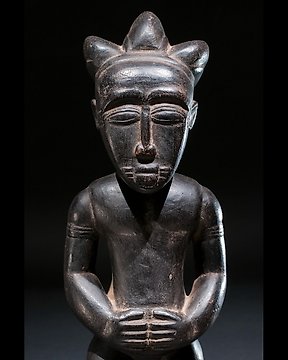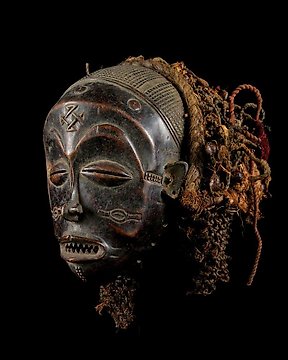stor kvinnlig förfaderstaty - Bété. - Elfenbenskusten
Nr 82979077

Senufo - Elfenbenskusten (Utan reservationspris)
Nr 82979077

Senufo - Elfenbenskusten (Utan reservationspris)
A Senufo Kpelie mask, Ivory Cosat, region Korhogo, collected in the village village Nabegue, protruding pointed mouth, a slender curved nose, narrow u-shaped eyes, scarifications on the cheeks, near the mouth and on the forehead, flats coming out of the cheeks, antelope-like horns on top of which a female figure sits; brown to reddish patina, signs of age and ritual use. Certificate of origin and provenance; incl. wooden stand, provenance Mohamed Belo Garba.
If you want to know whether a Kpelie mask is old and comes from ritual use, you should - like a Senufo dancer - take the mask in your hand: You can immediately see where the brightly rubbed traces of use appear on the mask. The marks on the bottom two protuberances are more different for a right-hander than for a left-hander. This mask clearly shows a right-handed dancer. WJ.
"Kpelie-masks were worn during funeral sessions by the Poro society. These funeral festivities are marked by masquerades, which symbolically expresses the fundamental dualities in Senufo Thought: male/female, body/spirit, life/death. In general this type of mask is symbolizing an ideal woman. The unique features which characterize the Kpelié mask include elongated flanges radiating from the bottom part of the mask, which are a reference to the hornbill bird. The horns on the mask refer to the ram, an important sacrificial animal. The nodules on the forehead represent palm nuts as well as vulvas; they are flanked by cicatrization marks that symbolize the twins born to the primordial couple. The significance of the double face are not known, but double- and single- faced Kpelié are used interchangably. Facing the Mask, Herreman, Frank, Museum for African Art. s. publ."
Lit.: Holas, Bohumil, L'art sacré sénoufo. Ses différentes expressions dans la vie sociale, Limoges, 1978. Herreman, Frank, Facing the Mask, Museum for African Art, New York, 2002. Till Foerster, Divination bei den Kafibele-Senufo.
Du kanske också gillar
- 16+
Detta objekt förekom i
Hur du köper på Catawiki
1. Upptäck något speciellt
2. Lägg det högsta budet
3. Gör en säker betalning

